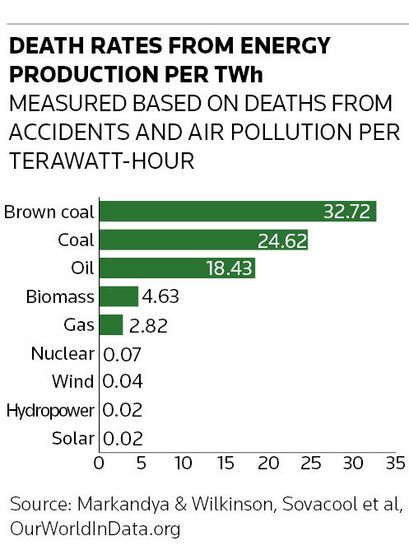Simmering uncertainty over whether nuclear power is appropriate for financing through green bonds has come to the boil with an oversubscribed deal in Canada. While the emissions-free energy source has been excluded from almost every green bond framework to date and may fall outside the EU's green taxonomy, proponents say the outlook for further issues is nonetheless strong – with the Canadian government’s forthcoming green framework a potential weighty sovereign endorsement.
The landmark deal – the first green bond backed by nuclear power generation – saw Bruce Power issue C$500m (US$395m) of seven-year green debt through a domestic private placement that closed on November 22. Bruce Power supplies a third of Ontario’s electricity and has a target of reaching net-zero emissions by 2027.
As many as 60 Canadian investors in multiple provinces bought the bonds in a deal that was between five and six times subscribed. BMO Capital Markets, HSBC and TD Securities were lead agents and bookrunners.
The new issue, which had been in preparation for nearly a year and funds Bruce Power's "life-long extension” programme for existing plants, references a green financing framework published in June.
The framework carries the reassurance of a favourable second-party opinion from Cicero Shades of Green. The Norwegian reviewer ranks Bruce Power's framework as “Medium Green” – the middle of its three-point scale of greenness.
“That credibility [from the SPO] is really important when you think about doing something that is not a well-trodden path,” said Jonathan Hackett, head of sustainable finance at BMO Capital Markets.
Cicero Green stresses that the deal does not signal an open door to all potential nuclear green bonds, but said it will consider different deals on their merits.
“Circumstances can be very different with different companies and different regulatory structures in different countries,” said Christa Clapp, co-founder and managing partner of Cicero Green.
She said Canadian regulation requiring Bruce Power to carry out extensive risk analysis plus social and environmental safeguards concerning the issuer’s supply chain were significant in Cicero Green's favourable SPO.
“We're trying to look at that whole chain all the way from uranium mining to the power generation to the long-term waste storage and understanding where the risks are and what the role of the issuer is in that chain,” Clapp said.
Bowing to push-back
Whether bonds funding nuclear power generation can be green is a controversial question. While some Canadian investors had been willing previously to hold unlabelled Bruce Power debt in green portfolios, according to Hackett, many ESG-oriented accounts globally are still sceptical – even though the majority of "pathways" that the Intergovernmental Panel on Climate Change has judged should limit global warming to 1.5 degrees include substantial increases in nuclear power.
Accordingly, almost all green bond issuers have excluded nuclear from their frameworks. They include the UK, whose decision came despite government policy being to support an expansion of nuclear power generation. Like sovereign green bond pioneer France (another strong nuclear advocate), the UK bowed to anticipated investor push-back.
"[M]any sustainable investors have exclusionary criteria in place around nuclear energy," the UK framework acknowledges.
Similarly, the EU excluded nuclear power from the framework for its €250bn NextGenerationEU green bond programme, the world’s largest by far.
It remains unclear whether nuclear power will ultimately form part of the EU taxonomy of green activities and green bond standard, however. An influential technical report from the European Commission’s Joint Research Centre noted in March that nuclear power meets the taxonomy’s “do no significant harm” requirement.
But at least four member states oppose nuclear's inclusion in the taxonomy.
The controversial nature of nuclear power in Europe was again on display last week when Eurosif warned that including nuclear power in the taxonomy “brings little benefit, but carries profound risks for the credibility of the EU sustainable finance agenda”.
Inclusion of nuclear power would confuse investors and lead to other sectors seeking less stringent and less science-based treatment in the taxonomy, said Victor van Hoorn, executive director of Eurosif, which bills itself as an association for the promotion and advancement of sustainable and responsible investment across Europe.
Canadian centre
For now, the new nuclear power/green bond push is centred on Canada. Ontario Power Generation, which earlier signed a sustainability-linked loan, could soon follow Bruce Power's bond lead.
Moreover, the Canadian federal government may include nuclear expenditures in its forthcoming green bond framework.
Canada is set to become the fifth G7 sovereign to enter the green bond market, having committed to issue a debut deal in its 2021–22 fiscal year, which ends on March 31.
“If we look at the energy transition pathway that Canada has, the importance of nuclear power to it, and as well as the opportunity that Canada has to be a global leader on nuclear technology and the safe extraction and management of uranium over the next 30 years, there's absolutely the use of proceeds there,” said Hackett. “It's just a question of whether or not they would like to have that as part of the discussion in the dialogue around their green bond.”
The potential issuer base for green bonds backed by nuclear power is global. For one thing, utilities around the world that generate emissions-free electricity through nuclear may also issue.
More generally, the emergence of small and micro-modular reactor technology could lead a broader array of energy-intensive industrial companies, such as miners, to incorporate expenditure on nuclear power generation in green bond frameworks.
“The ability to say ‘here's an investment I'm making that really is driving decarbonisation, it's green and it could be providing baseload power to surrounding communities as well’, that would be a great avenue to see more issuers doing green nuclear in the future,” said Hackett.
Clapp would not confirm if Cicero Green was reviewing further nuclear green bonds. But she acknowledged that the firm had received enquiries about the topic since the Bruce Power deal closed.
